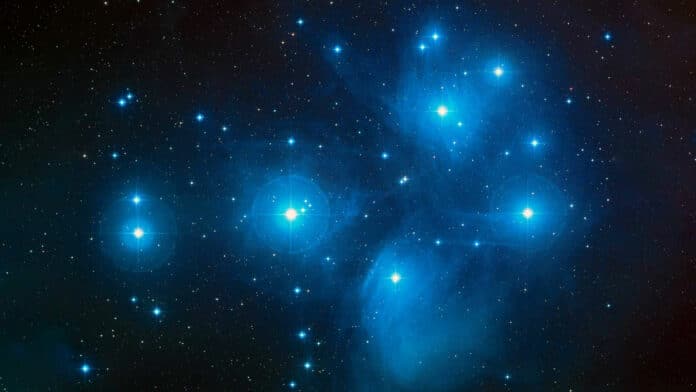How do you measure dark matter?
Einstein’s General Theory of Relativity suggests the answer: by watching how it impacts things that you can see — specifically, how light from distant galaxies bends around it.
This distortion is a small effect; an imperceptible amount distorts the shape of a single galaxy. But, when scientists measured 25 million galaxies, they could measure the distortion with high precision.
In a new study, an international team led by astronomers from Princeton University and the astronomical communities of Japan and Taiwan used Hyper Suprime-Cam (HSC) observations on the Subaru telescope. They measured a value for the “clumpiness” of the universe’s dark matter — known to cosmologists as “S8” — of 0.776.
It is consistent with values discovered by earlier gravitational lensing studies when studying the relatively young cosmos. Still, it differs from the value of 0.82 observed in the Cosmic Microwave Background, which comes from the universe’s beginning.
Although there isn’t much difference between these two values, it doesn’t seem coincidental. The alternative options are that one of these measurements contains some as-yet-unrecognized error or that the conventional cosmological model is interestingly flawed.
Michael Strauss, chair of Princeton’s Department of Astrophysical Sciences and one of the leaders of the HSC team, said, “We’re still being fairly cautious here. We’re not saying we’ve just discovered that modern cosmology is wrong. The statistics show that there’s only a one in 20 chance that it’s just due to chance, which is compelling but not completely definitive. But as we in the astronomy community come to the same conclusion over multiple experiments, as we keep on doing these measurements, perhaps we’re finding that it’s real.”
“We are human beings, and we do have preferences. That’s why we do what we call a ‘blinded’ analysis. Scientists have become self-aware enough to know that we will bias ourselves, no matter how careful we are, unless we carry out our analysis without allowing ourselves to know the results until the end.”
“On February 16, the international team gathered on Zoom for the ceremonial unblinding. We unveiled the data and ran our plots. Immediately we saw it was great.”
The team used several different approaches to reach their conclusion about S8. Scientists focused on a so-called Fourier-space analysis, a parallel real-space analysis, 3×2-point analysis.
Roohi Dalal, a graduate student in astrophysics at Princeton who is the first author of one of a series of five papers, said, “Doing the different analyses was sort of a sanity check. Any discrepancies between those would tell us less about astrophysics and more about how we might have screwed up.”
“We didn’t know until the unblinding that two results were bang-on identical. It felt miraculous.”
Journal References:
- Hyper Suprime-Cam Year 3 Results: Cosmology from cosmic shear power spectra, by Roohi Dalal, Xiangchong Li, Andrina Nicola, Joe Zuntz, Michael A. Strauss, Sunao Sugiyama, Tianqing Zhang, Markus M. Rau, Rachel Mandelbaum, Masahiro Takada, Surhud More, Hironao Miyatake, Arun Kannawadi, Masato Shirasaki, Takanori Taniguchi, Ryuichi Takahashi, Ken Osato, Takashi Hamana, Masamune Oguri, Atsushi J. Nishizawa, Andrés A. Plazas Malagón, Tomomi Sunayama, David Alonso, Anže Slosar, and Paul A. Price.
- Li, X. et al. 2023, Hyper Suprime-Cam Year 3 Results: Cosmology from cosmic shear two-point correlation functions.
- Miyatake, H. et al. 2023, Hyper Suprime-Cam Year 3 Results: Cosmology from galaxy clustering and weak lensing with HSC and SDSS using the emulator-based halo model.
- More, S. et al. 2023, Hyper Suprime-Cam Year 3 Results: Measurements of the clustering of SDSS-BOSS galaxies, galaxy-galaxy lensing and cosmic shear.
- Sugiyama, S. et al. 2023, Hyper Suprime-Cam Year 3 Results: Cosmology from galaxy clustering and weak lensing with HSC and SDSS using the minimal bias model.
